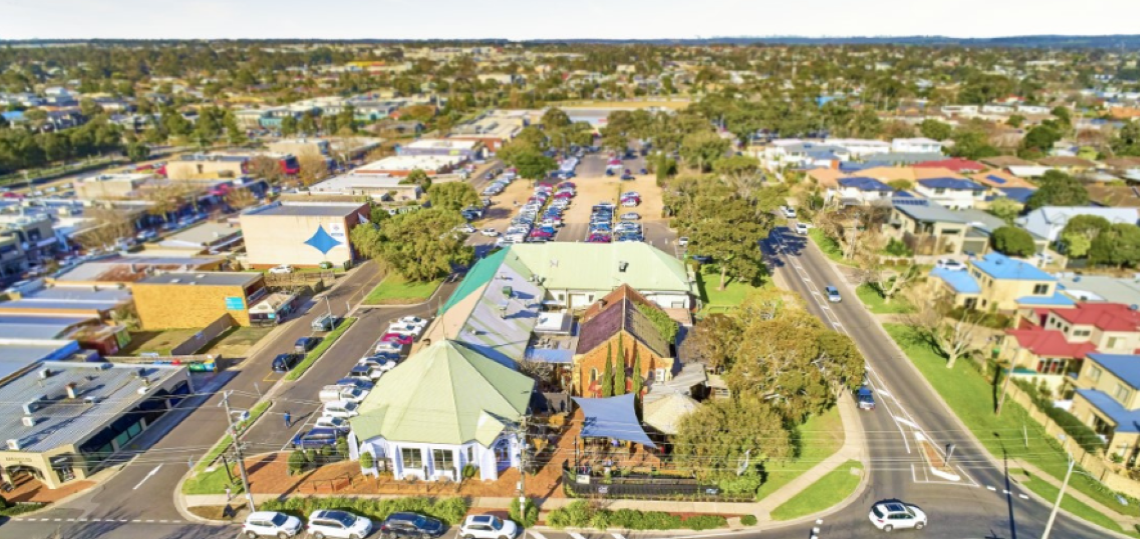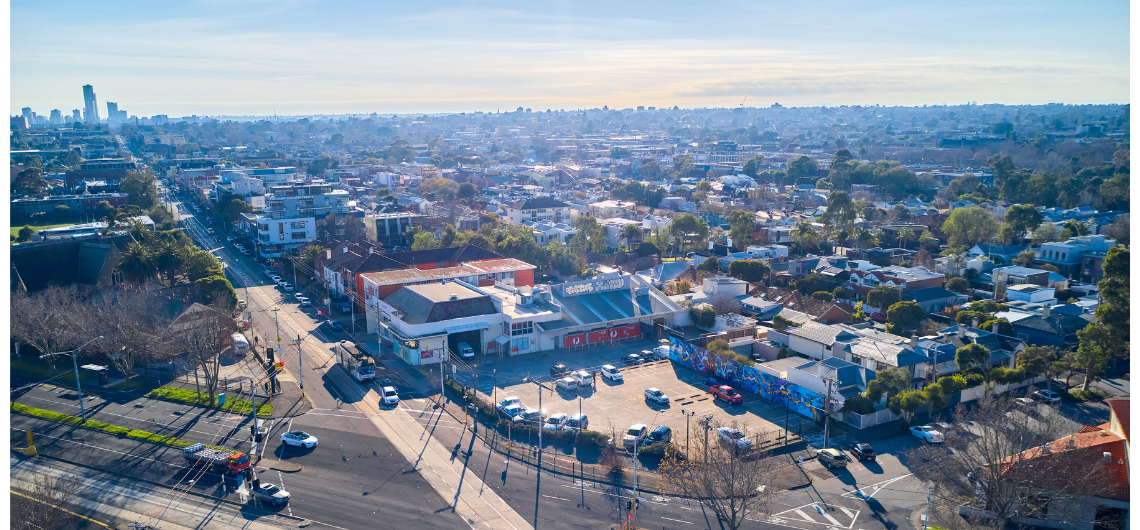
There has been much gloom about Australia bricks and mortar retail recently, from the demise of the department and discount department store, to the closure of well-known established brands. So I recently spent time in the US to see how that market is faring amidst its “home-grown” Amazon affect, with my trip entailing attendance of ICSC RECon 2019, the global convention for all things shopping centre-related, as well as a study tour of LA’s best retail experiences.
As well as our vast geographic distances, the two markets share other similar considerations. For example, generic chain retail is also struggling in the US. But it’s not just under pressure from online competition. A new breed of physical retail experiences is elevating consumer expectations about just how special shopping can be – and ultimately gives me the confidence in the future importance of physical retail.
Here are three insights Australian retail investors and operators should keep in mind;
1. It’s not about bricks vs clicks, but bricks + clicks
It’s now universally accepted that retailers need an online presence, or risk becoming obsolete. However, the converse is also true in the US. Online-first or ‘digitally native’ retailers are increasingly opening physical stores, because this can be a short cut to positive brand perception, enhanced product awareness, customer loyalty and ultimately, enhanced sales.
According to the International Council of Shopping Centers’ recent survey of 7,000 European consumers, the opening of a physical store by an online retailer actually boosts their desire to shop online. 91% said they would visit a new store, while 35% said they would also increase how frequently they would visit the retailer’s website as a direct result of a new store opening.
Smart retailers are seamlessly integrating their online and offline experiences, using clever offers and tools to bring more customers to their stores. For example, Walmart provides an online discount if shoppers are willing to collect their purchase in store – giving the discount retailer a chance to upsell while they’re in store.
There is no doubt that retailers expect their sales / productivity floorspace to reduce. When every product is available online, a ‘local store’ format may combine a more limited showroom range, alongside additional services such as a café or champagne bar. Department store giant Nordstrom is doing just that, with tiny specialty-size stores in high-brow neighbourhood centres offering in-house tailoring to alter clothing bought online.
In the US, Target has one of the most dynamic ‘bricks and clicks’ strategies I’ve seen, sharing at RECon 2019 their strong and continued focus on convenience and speed of fulfilment. Think larger ‘boxes’ for warehousing and logistics deliveries, or designated drive through pick up areas to reduce customers wait time to the bare minimum.
Key takeaway: Expect to see strong emerging tenant demand from pureplay online retailers actively looking for ‘pop-up’ space. National retailers will look for ways to make the online order to instore pick-up process (and vice versa) as seamless as possible, significantly enhancing customer experience.
2. Retail is now a lifestyle experience
From hotel-standard concierges and valets to concerts and outdoor cinemas, many of LA’s new shopping precincts showcase a meticulous attention to detail towards luring the customer to shop there. This is especially evident in areas with more affluent demographics, where a ‘touch of class’ creates a point of difference – and a reason to keep returning with an atmosphere conducive to spending.
Palisades Village is an outstanding example of this experiential retail, and shows how a world class shopping mall operator like Rick Caruso can transform a legacy asset. It is manicured magnificence and sensory overload, with impressive double-fronted street facades, quality landscaping, upbeat music and even scents. It has also successfully integrated smaller concept stores for online retailers like Carbon 38 into the mix, and offers a state of the art boutique cinema, Cinepolis.
Caruso also operates The Grove, an adult Disneyland of a shopping mall spanning 53,400sqm in Los Angeles’ Fairfax district. Its concierge desk can organise flights, hotels and restaurants, while a bell boy will collect all your shopping bags. Marble clad bathrooms offer Moulton Brown soaps, there’s a private relaxation lounge, a regal looking shoeshine area and red carpet from the valet parking. Plus, a communal area attracts young families to gather over lawn games like beanbag tossing – or to listen to regular live music shows.
This investment in high-end finishes and lifestyle attractions is paying off. The Grove’s specialty store sales average a remarkable $22,000/sqm (circa $2,000/ square foot), and it has one of Nordstrom’s best performing department stores in the country. This is despite many speculating such stores no longer have a place in the retail landscape.
Key takeaway: These high quality retail experiences don’t need to be vast wonderlands. Think small but perfectly-formed outdoor centres or ‘high streets’, with meticulous attention to every detail.
3. Re-thinking retail authenticity
Australia’s urban regeneration trends are also reflected in the re-purposing of industrial assets in Los Angeles, particularly in downtown LA and the fringe areas with high population density.
This is 'Industail' – heritage multi-storey warehouse conversions like ROW DTLA that preserve the architecturally interesting bones of the past in a whole new retail experience. Other examples include contemporary shed conversions which make ideal spaces for incubator or pop-up tenants, such as digital native retail brands.
‘Anti-mall’ The Lab and eco-friendly The CAMP at Costa Mesa CA are interesting examples of this, repurposing concrete tilt slab former industrial units into funky landscaped shopping destinations with a mix of established brands like Urban Outfitters, online tenants, local artists, bars and hair salons.
Market halls are the new food court and organic grocers like Wholefoods are the new anchor tenants in spaces like these – particularly in more affluent areas. For example, organic grocer and café Erewhon is part of the Venice Blvd precinct, while Abbott Kinney Blvd also offers ‘A-list food trucks’ on Fridays and other distinctive marketing events.
Key takeaway: Carefully curated retail offers still need to feel real and genuine and ‘street culture’ engenders this. Think outside the traditional anchor tenant box – and remember “like attracts like”.
One thing Australian retail has in its favour is our strict planning laws. It’s astounding to realise that the US market’s floorspace provision is 2.4 times Australia’s on a per capita basis (Moelis Research). In the US, the online onslaught is certainly going to take its toll on a growing number of ‘zombie malls’ – yet I also saw examples where these centres have re-invented themselves as offices or vast mixed-use complexes including retail, multi family, hospitals and entertainment hubs. An example of this is QIC’s South Bay Galleria at Forest City, inland from Redondo Beach. So perhaps we may be over-reacting to the future of Australian retail, particularly when we consider the quality and abundance of land, and the strong locations many centres occupy?
Yes, some major large format and dated fashion retailers are under pressure in Australia. However, if we re-think the retail experience, there are other ideas that will bring shoppers through the doors. And if the US is any indication, those new ideas could see very different kind of retail environment take shape.
Footnote & credits: Sincere thanks to Stephanie Skirbin, Principal at Avison Young Los Angeles for selflessly assisting me and driving me around LA for 2 days!
















